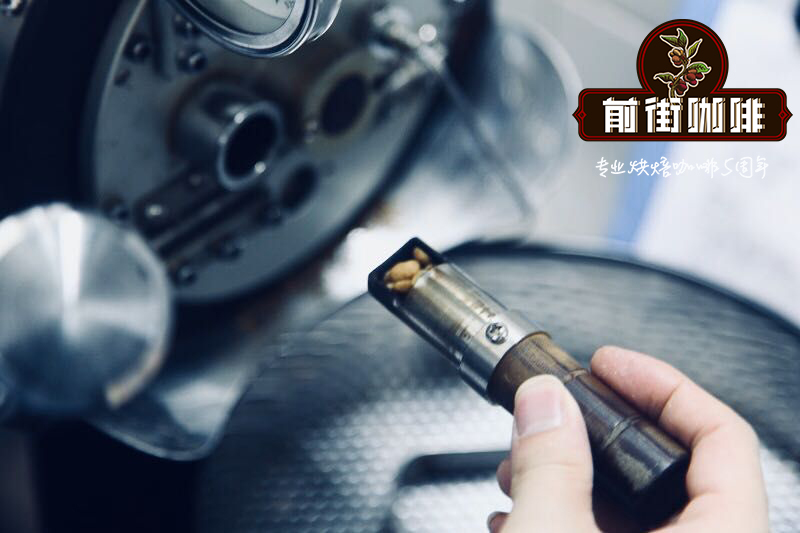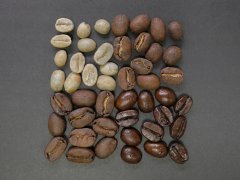What is the effect of bean baking machine capacity and bean baking quantity on baking? how to calculate the best baking batch
When you want to bake a batch of raw beans, will you consider the capacity of the baking machine and adjust the baking method? How much effort did you put into baking this batch of beans? Knowing the capacity of the bean roaster and how roasting affects coffee roasting will give you a better understanding of roasting, control the causes, and bake better beans.
In this article, let's take a look at how the capacity of the bean dryer and the amount of beans baked affect the baking results.
Know the recommended amount of baked beans on the machine.
Each coffee roaster has a recommended capacity, which is set by the manufacturer. This is the maximum recommended amount you can bake, not the amount of beans you can bake for the best results. Manufacturers usually increase this number as much as possible.
In boutique coffee, it is usually only possible to bake up to 80% of the capacity set by the bean roaster in order to better control the baking results. Users should not think that the rated capacity of the machine is its best batch capacity. It is found that although not most, there are many machines that use 50% to 70% of the rated capacity to bake the best coffee.
We say that we should not use the maximum capacity of baked beans set by the manufacturer. The baked beans perform better, but what does this mean? Let's see what happens when too many or too few coffee beans are thrown into the toaster.
There are too many baked beans
In order for the drum of the bean baking machine to get a steady amount of heat and to make the beans develop well after the first explosion, you need to apply enough heat at the beginning of the baking. In an overloaded bean dryer, there may not be enough energy to heat all the beans correctly, which will cause the temperature to rise too slowly and increase the total time it takes to reach the best development of coffee beans. The result may give the coffee a roasted and insipid taste.
If you drive a V4 car with six passengers on board, you will consume more gas and time than a V12 car with the same number of passengers. Cars with V12 engines will also be faster. By the same token, if you bake fewer beans or increase the running power of the machine, you can avoid baking for too long.
Guo Tsai's bean roaster is also less efficient in turning coffee beans, because the drum is not big enough, the beans cannot be flipped evenly, and the coffee beans will expand during the baking process, so the drum space will be more overloaded.
Baking too much coffee at a time may cause some beans to be overexposed to the direct heat of the drum, while others may not absorb enough heat, which means that the beans will be uneven and increase the likelihood of burning.
When you change the batch of baked beans, you actually increase or decrease the amount of heat convection, affecting the chances of hot air coming into contact with the beans, so you are actually creating more surface area for the coffee beans to transfer heat.
Imagine you are in a very crowded and generous place, and everyone is smoking. You must soon smell of tobacco. This can also happen in the bean dryer, and if you bake too many coffee beans when the calories are low and the baking time is prolonged, it will give the coffee beans a strong smell of smoke, which is completely contrary to the dry coffee we are looking for.
Even if you buy high-quality raw beans, it is pointless and outrageous to bake them badly. Must focus on the quality of each link. If you want to bake more beans at a time, you should buy a bigger machine.
There are too few baked beans.
The problem of baking too many beans mentioned above can be solved by reducing the amount of beans, but it will also cause problems if you put too few beans.
If the baking amount is less than the rated full load of 1 stroke 3, it means that the amount of baked beans is too little, and too little baking batch actually makes it more difficult to control the temperature during baking. Generally speaking, you will need to adjust the preheating temperature and firepower according to the amount of baked beans to make up for the changes brought about by the baked beans.
In his book In The Coffee Roasters Companion, Scott Rao warns that there may be problems if you bake small batches of coffee without adjusting the roasting factors. He lists the following possible situations:
1. Less airflow: this prevents beans from being sucked out of the bean dryer
2. The speed of the drum is slow: the standard drum RPM will cause the coffee beans to bounce in the drum and discharge from the exhaust port.
3. No temperature probe to assist baking: when the amount of beans is too small to insert the probe, the probe may become useless
When roasting too small batches of coffee, each factor changes, which is more like a guessing game than stable baking.
Sometimes it helps to adjust the size of the batch according to the amount of beans you bake. For example, using a 7.5-kilogram batch to handle 30-kilogram vacuum-packed raw beans, this only allows you to bake four pots of raw beans without any leftover raw beans. In addition, because the change of batch size represents the difference of heat required, the consistent batch size is also a necessary condition for stable baking.
How to calculate the best batch of baked beans
Know your bean dryer and heating type
The heat that may be generated by the bean roaster is a key factor in determining the best batch of beans. A bean dryer with a stronger heat source will generate enough heat to heat up beans quickly at the beginning of baking, which is very important for the flavor development of coffee beans. If there are more calories in the bean dryer, you can put in more coffee at a faster rate, while the lower the calories, the less coffee you can put in.
Understanding your bean dryer and understanding the way you generate heat is a step in judging the batch size of baked beans.
When determining the batch size of baked beans, the material structure of the baking machine is also another important consideration. You may have two different bean dryers that show the same temperature on the probe, but the heat retained in the dryer wall may make the coffee beans react differently. Know your own bean dryer and don't think that using the same temperature, you can get the same results with other models of machines.
If you have four different bean dryers, they all weigh 15 kilograms, but they are all of different materials, even if the weight is exactly the same, but the performance will be different.
It is very important to know your machine. If you know the carrying batch of the baking machine, the structure of the baking machine and the material of heat conduction, and the heating power of the power supply, it is the way to calculate the ideal baking batch.
Status of raw beans to be baked
The type of raw beans you want to bake is also the key to the baking batch, and the density, moisture content and mesh size of the beans will all affect the endothermic effect, so it is very important to understand the raw beans you want to bake. If you know the effects of density, moisture content and mesh size, you can calculate the energy required to bake these beans and develop their flavor, and you must also do sample baking.
In the early stages of baking, it takes a lot of energy to heat and remove the moisture from raw beans.
Monitoring baking curve
Keep an eye on the baking curve you use. if the curve is flat, the roasted coffee may have a sense of emptiness or underdevelopment. More thermal power is needed to increase the heating rate in the first few minutes and steepen the curve. after the first explosion, the curve tends to flatten out.
Many people observe the time of the first explosion, but they don't really think about why it reached it at this point in time. If you bake beans in this way of little knowledge, there is a risk of overloading the baked beans. The first explosion will still occur, but it will take longer to reach this stage, which will lead to the mediocre flavor and baking flavor of the coffee.
Start backwards from the ideal baking time, and if you do not reach the desired program at a specific time, please reduce the batch of baked beans. And this lies in the sample batch of the experiment, it is easy to find the appropriate amount of baked beans.
By understanding how the batch size of baked beans and the load of the machine affect the baking process, you can make more evidence-based choices, which means you can start with sample baking while avoiding wasting expensive raw coffee beans.
Check your baked beans from here, and test the coffee after baking, and when you find a way to bake, try fine-tuning each time you copy and bake. The key to a successful bean baker is the stability of baking, and adjusting the baking batch is only a simple step.

Important Notice :
前街咖啡 FrontStreet Coffee has moved to new addredd:
FrontStreet Coffee Address: 315,Donghua East Road,GuangZhou
Tel:020 38364473
- Prev

What is the difference between new beans, old beans, old beans and high-quality old beans?
The roasting date of coffee beans is very important, and the roasting date can be used to determine whether the coffee is in a delicious state or whether it has been stored for too long or improperly stored. But do you know the state of these coffee beans before they are roasted? After the fruit is harvested, the coffee will be treated for several weeks, including the procedures of pulp removal, fermentation, drying, hand picking and so on.
- Next

The method of making coffee with Philharmonic pressure introduces the advantages and disadvantages of Philharmonic pressure and d special pressure.
This brewing apparatus is not a flash in the pan, its appearance is not like ordinary brewing equipment, and the company that invented this brewing apparatus is not famous for producing coffee equipment, but the Frisbee they produce. However, now Ailo pressure is a favorite cooking apparatus for many people in the world, and there is even Ailo pressure.
Related
- Beginners will see the "Coffee pull flower" guide!
- What is the difference between ice blog purified milk and ordinary milk coffee?
- Why is the Philippines the largest producer of crops in Liberia?
- For coffee extraction, should the fine powder be retained?
- How does extracted espresso fill pressed powder? How much strength does it take to press the powder?
- How to make jasmine cold extract coffee? Is the jasmine + latte good?
- Will this little toy really make the coffee taste better? How does Lily Drip affect coffee extraction?
- Will the action of slapping the filter cup also affect coffee extraction?
- What's the difference between powder-to-water ratio and powder-to-liquid ratio?
- What is the Ethiopian local species? What does it have to do with Heirloom native species?

